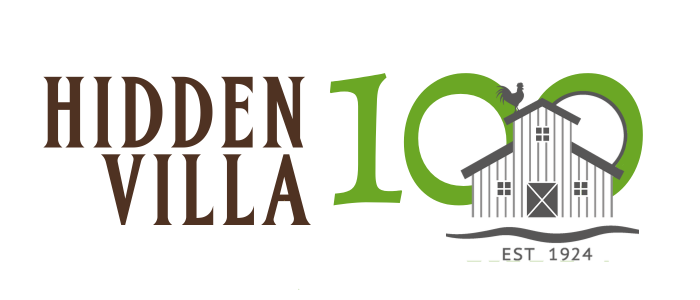Vision
Our vision is a sustainable, healthy, and just future for all.
Mission
Our mission is to foster educational experiences that build connections and inspire a deeper appreciation and respect for nature, food, and one another.
Values
Our values are: Access, Community, Exploration, and Stewardship.
History
This legacy began in 1924, when Frank and Josephine Duveneck purchased the property near Los Altos and began sharing the land and creating humanitarian programs that have inspired many generations. The Duvenecks were profoundly generous and dedicated to creating a just and sustainable future for all.
Today, the Hidden Villa Board of Trustees remains committed to the lessons long taught by the Duvenecks and sustained by our organization since their passing. We stand opposed to discrimination based on ethnicity, national origin, religion or sexual identity. We support environmental regulations that preserve our healthy environment and food systems through regenerative agriculture, and most of all, we strive to inspire future leaders and stewards of the earth.
Learn about our Educational Philosophy and our practice of Responsible Agriculture. A Timeline of key events in Hidden Villa’s history is provided below.
Hidden Villa Timeline
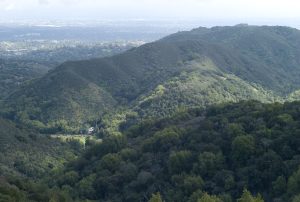
The Duvenecks purchase the core acreage of what becomes the Hidden Villa we know today.
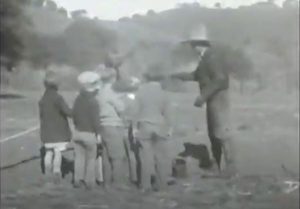
First documented school field trip to Hidden Villa.

The Duvenecks move into the Main House upon its completion (image courtesy of Los Altos Historical Society, Liz Dana Collection)
The Duvenecks welcome the first of many refugees fleeing persecution in Europe to stay at Hidden Villa. For example, an early refugee family from Russia gave the “Kremlin”, a long time guest/staff cottage, its name.
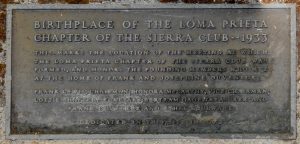
Loma Prieta chapter of the Sierra Club founded at HV.

Opened the first hostel on the Pacific coast.
First of three work/study summer camps for college age students, the “Experiment in International Living” held at HV. One project was expanding Hostel laying the groundwork for future summer camps.
The Duvenecks protested Executive Order 9066 and the resulting relocation/incarceration of Japanese Americans.
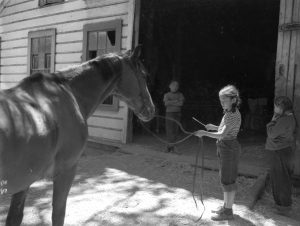
Provided housing and re-settlement support for Japanese Americans returning from internment camps.
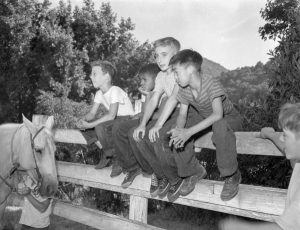
Created the first multi-racial, residential summer camp.
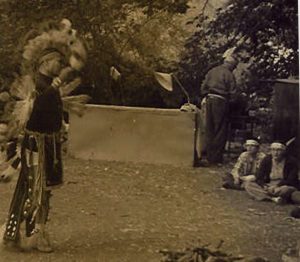
Josephine becomes active in Native Californian outreach & support. Numerous Native Californian and American dancers and children hosted at Summer Camps and other programs over the years.
Established the Trust for Hidden Villa as a nonprofit organization
Supported Cesar Chavez and Dolores Huerta in organizing the National Farm Workers Movement (which became the UFW)
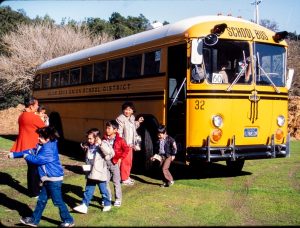
Hidden Villa Environmental Education Program (HVEEP) launched on the First Earth Day.
Frank and Josephine gift outright 420 acres of Windmill Pasture to MidPen Open Space District.
Friends of Hidden Villa organize to provide additional community support to the Duvenecks for Hidden Villa’s expanding operations.
Josephine Duveneck passes away.
Hidden Villa Trust begins process of selling Development rights on nearly 1500 acres of the Adobe Creek watershed to MidPen, thereby preserving its status as wilds in perpetuity.
Frank Duveneck passes away. Hidden Villa Trust begins 2 year process of transitioning to a fully self supporting organization.
Hidden Villa becomes a California Certified Organic Farm (CCOF).
Community Programs begins.
Community Supported Agricultural (CSA) share box program begins.
Community Services Agency of Mountain View partnership begins and continues today providing over 40,000 servings of fresh produce annually.
Middle and High school aged programming expands to include the school year.
Summer Camp program expands to include Kinder Camp.
Expanded community weekend offerings/programming begins.
Hidden Villa launches a Food Worth Celebrating series – a program for people of all ages to connect with their food.
HV celebrates 50 years of “Connecting Kids to Nature” via the HVEEP program.
HV commemorates 30 years of Community Supported Agriculture.
HV celebrates its Centennial, continuing to evolve programming and partnerships to ensure they are meeting the needs of the community.
Hidden Villa continues to evolve programming and partnerships to ensure they are meeting the needs of the community. Check back as we update our timeline as we enter the next chapter of our mission.
History Archival
Blog By Eric F., Hidden Villa Historian & Archivist
History of Hidden Villa
February 2025
Josephine’s Retreat
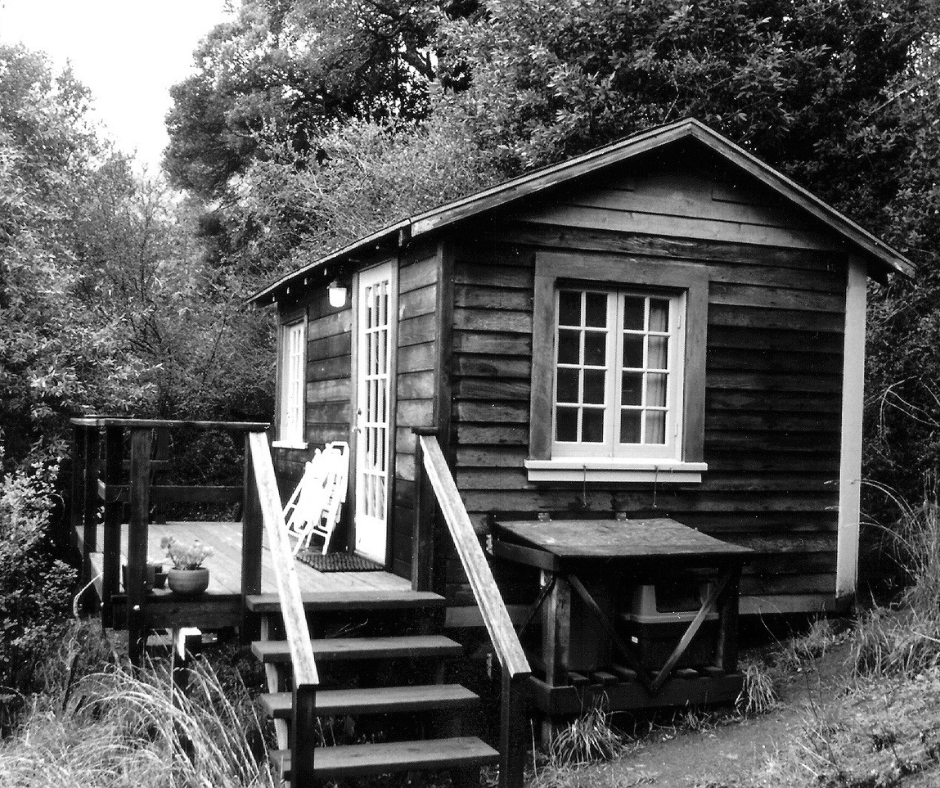
Josephine’s Retreat
In 1937, Frank started to build Josephine a little cabin on the hill behind the main house that she could retreat to when she needed to get away. Diny Vandervelden, the hostel manager in the 1990’s reported “I heard she’d go there sometimes for a whole week”. Others say it is where she did most of her work on her autobiography, Life on Two Levels. She certainly wrote many of her annual Christmas Chronicles to friends and family while ensconced in her retreat, mentioning it in several of her letters (1937, 1942 & 1943). After Josephine (in 1978) and then Frank (in 1985) passed away, the secluded retreat went unused and slowly fell into disrepair until restored in 1994 by Hidden Villa volunteers. While it has undergone some changes over the years, it was recently renovated and is now available for rentals.
If you have photos or stories from your stay at Josephine’s Retreat that you would be willing to share with us, we’d love to hear from you at history@hiddenvilla.org, If you are interested in learning more about Josephine’s Retreat in Josephine’s own words, we have gathered quotes and more supporting reference materials from the Hidden Villa Archive below.
In Josephine’s Own Words
In her 1978 autobiography, Josephine wrote the following about her retreat on the hillside:
“I was very fortunate to have a husband who, in spite of not entirely understanding my inner compulsions, was generous enough to accept the urgency for me. He built me a charming little cabin high on the hill behind the house where I could overlook the valley and the mountain and open sky. He never disturbed me there and he so impressed everybody on the ranch, that no one else ever dared approach it. It was a beautiful sanctuary and it served me well through some difficult years.” (Life on Two Levels, Chapter 22, Page 216 of the 1993 paperback reprint)
From Josephine’s annual Christmas Chronicles:
In late 1937:
Frank is also building me a house. Very stupidly when we built, I did not set aside any little nook which could be a study for me exclusively with the result that I have to seek a creek bottom or a hilltop when I wish to be unmolested. Either is a trifle damp in winter and often abounding in little gnats in summer and anyway. It’s a nuisance to carry books and writing materials hither and yon. So I am to have a little house 8 x 10 perched on the side of the hill above the orchard; not too far from the house but out of sight and sound. It hangs over space in a way that I like and can have since it need not please anyone else. It has two windows in the corner where my desk is to go and a place for a stove and another window and wall space long enough for a couch and one straight chair and one armchair and a marvellous view – and mel Let’s hope I shall be writing my Chronicle there next year! And I’ll send you a picture of my “Ashrama (Hidden Villa Archives, Josephine’s 1937 Christmas Chronicle Letter, dated November 20th, 1937, page 4, courtesy of David Duveneck)
In late February 1943, Josephine writes:
If you were with me now, we would be sitting in my little house on the hill, back of the main house. It is about two o’clock of a Sunday afternoon. Frank and Elizabeth and a gang of people are going for a ride. I had a long one yesterday and I am resolved to finish this message. We have had lots of rain the last week and so everything is incredibly fresh and lush and rejoicing in the warming sunshine. Below me the apricot trees are just coming in blossom, the trunk and branches so dark and the popcorn-like little blossoms standing out almost as if starched. The sound of many waters rushing comes from several directions where the creeks are running full ~ daffodils and narcissi are out along the path up the hill. Everything has a shimmering sort of look, even the hostel roof and the tin barn and Lee’s washing on the line. (Hidden Villa Archives, Josephine’s 1942 Christmas Chronicle letter, dated Feb 20, 1943, courtesy of David Duveneck)
Lee, wife of Julius Wahl, was the hostel parent at the time, and as discussed later, while no longer present, there was indeed a small orchard on the now open slopes below the retreat.
Josephine relates again in her next annual Christmas Chronicle (describing 1943):
Those of you who know my hillside cabin can imagine me ensconced this afternoon, lazily enough, on the couch wrapped in an’ old purple steamer rug which used to belong to my mother. It takes me back to the days of Atlantic journeys when it lay draped over her feet on a steamer chair. Outside my window there is a bush of toyon with its brilliant red berries. That is a bright spot in an otherwise grey and tan, olive green and dun colored landscape which is awaiting the rain. A few drops have fallen but the sky still hesitates. (Hidden Villa Archives, Josephine’s 1943 Christmas Chronicle letter, dated Dec 7th 1943, courtesy of David Duveneck)
References in Franks Ranch Rainfall Log Book
While the construction of many of the structures around the ranch is often mentioned, no reference to the construction of a cabin or retreat is found in the relevant time frame.
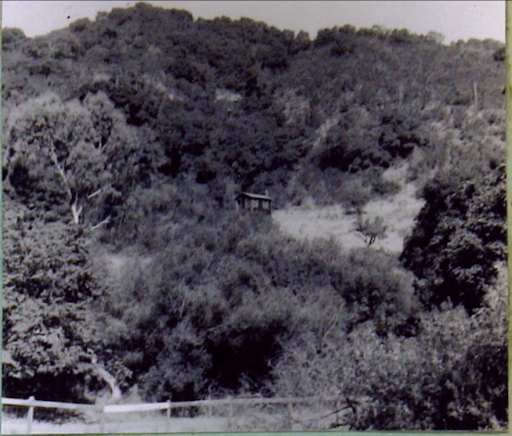
1958: Being Josephine’s private retreat, tucked away in an infrequently visited portion of the ranch, we do not have many early photos of the retreat. The best early image of Josephine’s Retreat we have yet identified is labeled “Hide-Out” found in the Hidden Villa Summer Camp 60th Anniversary Decadal Collection (on page 31 of the 1950’s section). Exact date of the photo is uncertain but based on context it was probably taken by a participant in the 1958 camp.
1947: The earliest currently found photo we have of the retreat is from 1947 and it is barely visible. Only after zooming in on the background of an image of arriving campers carrying their gear up to the hostel cabins, can you see the roof of Josphine’s Retreat, across the valley barely peaking out above the tree line.
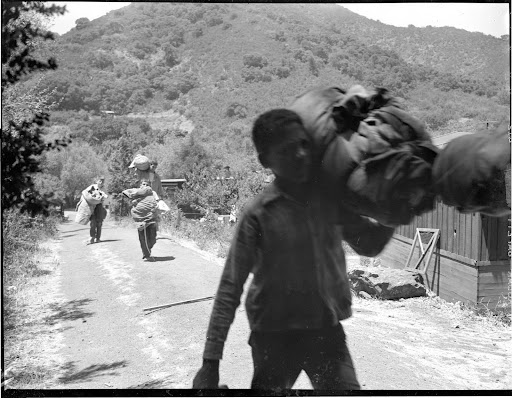
(1947 Ken Richards Summer Camp Photo Collection, Image # 16., Hidden Villa Archives) Very zoomed in portion of the Image #16 from the 1947 Ken Richards Summer Camp Photo Collection, allowing limited details of Josephine’s Retreat to be seen.
Aerial Imagery Evidence: While its presence can (barely) be detected in an 1939 aerial image (confirming that Frank did indeed finish it in the late 1930’s) it is more clearly seen in this recently discovered high resolution aerial image from 1951 (shown section is a zoomed in clip from the bottom edge of Frame 4-22, Flight C-16333, UCSB Aerial Photo Collection). In addition to Josephine’s Retreat overlooking the sloping open field in the upper middle left, the main house is visible in the bottom left, the tin barn (before the addition of the sheep addition in the bottom middle, and the 2nd hostel building in the lower right). This photo from 1951 is from well before the WEC was constructed in 2000s and the fence of the old horse riding arena is visible.
Supporting Map Evidence
While from before the time that the Retreat was built, below, In the very zoomed in portion of the 1933 Theodore Olfereiff Plane Table Survey of Hidden Villa Ranch (recently digitized from original in Hidden Villa Archive), one can see the orchard mentioned in Josephines 1937 and 1942 Christmas Chronicles quoted above. While this map was completed well before the construction of Josephine’s retreat, a horse trail path (solid line parallels by a dash line) to and past the eventual location is shown, with a foot trail continuing further upslope to the telephone lines. The area marked Dr. Lucas’s Cottage is the eventual location of the Hostel starting in 1937.
Hints of the old terracing remain visible on the hillside and more clearly in lidar data.
Multidirection Hillshade derived from 1m class LIDAR taken from the USGS National Map Viewer. The 4 to 5 parallel lines in the middle upper left are remnants of the terracing to support the orchard marked in the 1933 map.
October 2023
Harvest Festival Late 1970’s
Over the last month or so, another volunteer and I have been spending some time over at the Los Altos History Museum, helping them work through their collection of photographs about the Duvenecks and Hidden Villa. While there are many interesting images from as early as the 1930’s (or before), the one I’ve chosen for this month is a nice one of Frank and Josephine doing what they loved best, helping the community. Based on the badge on Josephine’s blouse (i.e. FCL Harvest Festival), we are sure this is one of the early Quaker Harvest Festivals that used to be hosted at Hidden Villa. As anybody who has read Josephine’s Autobiography (Life on Two Levels) knows that there is a strong connection between Josephine, Hidden Villa, and the Quakers. In fact, the first 27 Quaker Harvest Festivals were held at Hidden Villa (1966-1993) and the 57th was recently held in Palo Alto. The Duvenecks had a great knack for starting and supporting enduring traditions.
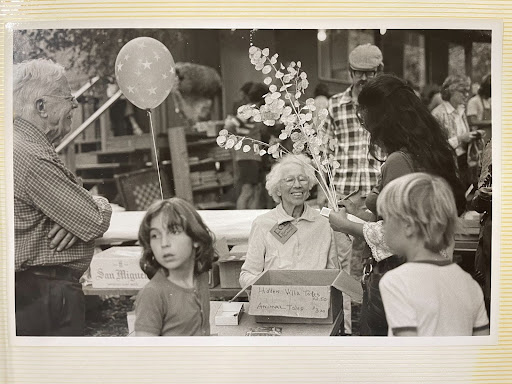
We are not (yet) sure exactly where or when this photo was taken, but we can get pretty close. The photo must be from between 1975 and 1978, as we know that Hidden Villa Tales was published in 1973 and Hidden Villa Animal Tales in 1975 (both are listed for sale at $2.50 and $3 respectively on the box in front of Josephine!) and Josephine passed away in 1978. As for where on Hidden Villa, we are also not (yet) 100% sure, but we think the photo might be taken somewhere around the location of the 2nd Hostel based on the building and greenery around it. If anybody has a better idea or would like to join us in better preserving, expanding, and sharing Hidden Villa’s history for its next 100 years, we would love to hear from you at history@hiddenvilla.org.
(Image courtesy of the Los Altos History Museum (from the Liz Dana Collection, Box 15)
September 2023
Finding the First Duveneck Deed
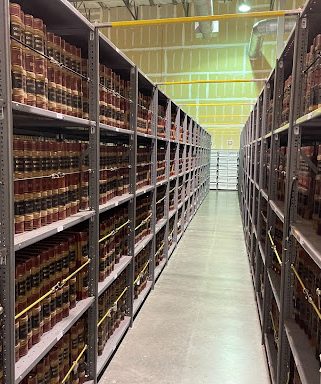 Hi, welcome to the inaugural post of a (hopefully) long running series about interesting periods and new facts about Hidden Villa’s history. In honor of the kick off of the anniversary of 100 years of Duvenecks at Hidden Villa, I thought it would be fitting to share a little bit about the quest to confirm exactly when the Duvenecks bought the first parts of Hidden Villa.
Hi, welcome to the inaugural post of a (hopefully) long running series about interesting periods and new facts about Hidden Villa’s history. In honor of the kick off of the anniversary of 100 years of Duvenecks at Hidden Villa, I thought it would be fitting to share a little bit about the quest to confirm exactly when the Duvenecks bought the first parts of Hidden Villa.
It is more complicated than at first it might appear as the available written sources differ. Josephine Duveneck writes in her 1978 autobiography “Life on Two Levels” that it was in 1924, yet two other historians (Phyllis Filiberti Butler in 1975 and Florence Fava in 1976) both reported 1923. There is even a sign near the gates of Hidden Villa that says 1925. Who is right, who is mistaken? Who knows! What is an aspiring historian to do? Enter the Source Document.
Errors creep into the historical records, much like the children’s game of telephone. Historians (of which I only consider myself at best a Historian in Training) are constantly in search of primary sources. I am coming to believe that a large part of being a Historian is knowing where to find the relevant primary sources. When in doubt check the sources. Even when not in doubt, you should probably check the sources.
After much head-scratching, I realized that in this case, the Santa Clara County Archives (with which I was already familiar due to previous research into historic aerial photographs, more on that another day) held the collections of the County of Santa Clara Official Records. It can be a bit overwhelming though. They have a lot of records. I mean a lot of records.
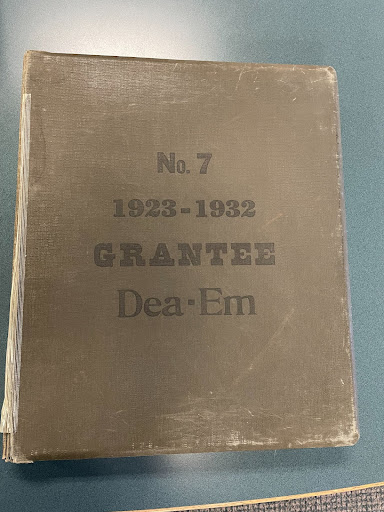 This many books makes sense though when you think about it, as every single property transaction since 1850 in the entire Santa Clara County is recorded, plus a lot of other things like mortgages, change of names, etc.. One could hope that it was already digitized. While it has been microfiched and those digitized, the early records, handwritten in cursive, is not necessarily readily machine searchable and there are also various legal reasons why you can only access the digital records from the County Clerk Recorders office.
This many books makes sense though when you think about it, as every single property transaction since 1850 in the entire Santa Clara County is recorded, plus a lot of other things like mortgages, change of names, etc.. One could hope that it was already digitized. While it has been microfiched and those digitized, the early records, handwritten in cursive, is not necessarily readily machine searchable and there are also various legal reasons why you can only access the digital records from the County Clerk Recorders office.
That said, luckily for us, somebody in the Clerk Records Office back in the day was assigned the job of building an Index for all these records. This was long before the time of computers, so the index had to be done by hand. Enter the Grantor/Grantee Indexes.
Basically, if you 1) know an approximate year, and 2) know the last name you are looking for, and 3) have a lot of patience, you might be in luck. I’m saving you a bunch of time from getting used to reading cursive and jumping right to the relevant page. See if you can find the relevant entry. It is there, I promise.
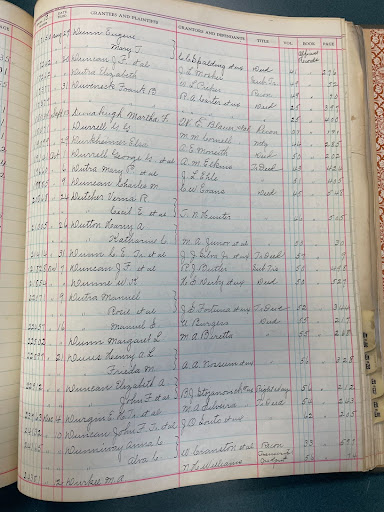 .
.
Page of 1923-1932 Grantee Index where the Duvenecks make their entrance into the historical record (with regards to Hidden Villa at least)
On the 5th row, a transaction is recorded as follows: On August 31 (I know it is 1923 from the unshown left side page), Duveneck, Frank B. (grantee) received from Carter, R.A et ux (grantor) a Deed as recorded starting on page 397 of Book 25 of the Official Record of Santa Clara County.
So you might be thinking that’s it, case closed. 1923 it is! But not quite yet… One has to check the actual deed to make sure the transaction is the one you hope it is. Since I had found many other additional transactions of possible interest (including for example one from 1918 that turned out to be Josephine’s purchase of their house in Palo Alto while Frank was away for WWI), the initial pull request was significant.
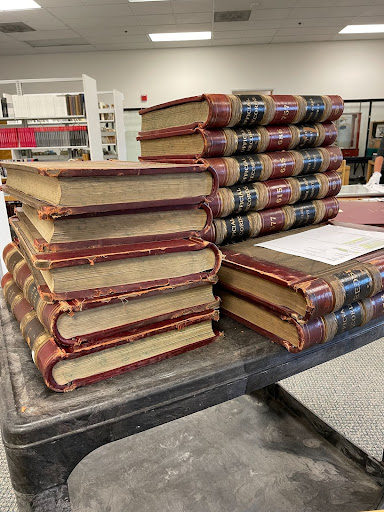 Stack of Official Records to review for actual recorded deeds of potential interest
Stack of Official Records to review for actual recorded deeds of potential interest
When I finally got to Official Record Book 25 it was pretty clear that the 8/31/1923 transaction was the correct one. Starting on page 397 of Book 25 of the Official Records of Santa Clara County, a simple 2 page deed is transcribed (pictures follow). While there is a fair amount of legalistic broiler plate, it is dated August 23rd, 1923, notarized on the same day, and officially recorded on August 31, 1923, and records the fact that Royle A. Carter and Jean Lind Carter (his wife) deeded 869.42 acres to Frank B. Duveneck.
History Archives
Update from History @ Hidden Villa
Been a while since I’ve provided an update. There’s been a lot of progress & interesting finds but we’ve also been scrambling to get a new trial experiential learning collaboration with Foothill College History Department up and running so that is what I’ll write about today.
I’m excited (and relieved) to say that the first 10 days are successfully behind us. Already we’ve had 100+ hours from 27 Foothill student “volunteers”. I say “volunteer” in quotes as many, but not all, have to do 10 hours of “volunteering” at a local history archive for a History class project. Rather than making them come to the archive, we’ve been allowed to bring the archive to them : ). Foothill has provided a dedicated room and the students and supportive oversight, and HV has provided the materials, procedures, and additional oversight. Current student projects are indexing (at the folder level) content of about 20 banker boxes so we’ll know what is in them, and also helping organize, rehouse and then index massive amounts of loose photos, slides, contact sheets, and negatives. A quick, probably low, estimate is 10,000+ images. Most of the images seem to be from the 80’s and 90’s but I’ve also seen at least a few early ones from the 1940’s that are new to me at least. Projects in upcoming quarters will likely be digitizing higher priority images and attaching meta data, building catalogs of newspaper clippings, etc. Long range, I’m hoping some students will grow with the archive and decide to do independent study projects like building finders aids or a research project on an area of particular interest to them.
Working with a new group of Foothill students is fun. Maybe 1/3rd of them remember visiting HV at least once, some many times, during their childhood so it is nice to help them reconnect even if just a little bit. The other ⅔ are slowly learning about it via osmosis while helping sort photos and I hope to arrange for a short history tour/visit for them someday soon.
Big thanks to History @ Hidden Villa volunteers (Leilani Marshall, Margie Alving, and also Willow Lachter our Foothill student procedure tester extraordinaire), everyone at HV (especially Marlene, Sofia, Heather, Elliott, . . . ) and Foothill (Prof. Ziegenhorn of the History Department, and Prof. Connell of the Anthropology Dept as well as Alex Collins, Dr. Aaron Korngeibel, Dean of the Business and Social Science Division and his boss, Dr. Stacy Gleixner, VP of Instruction all of whom were instrumental in getting approval for the plans) who have helped make this collaboration a success!
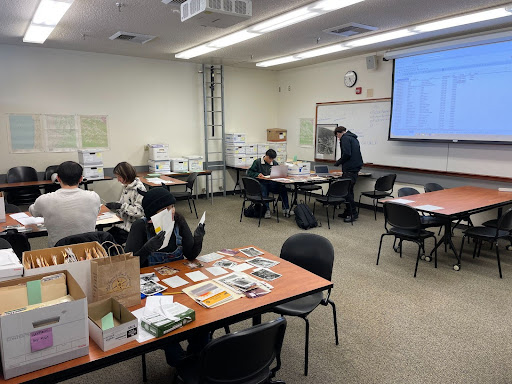 Foothill College Students helping organize Hidden Villa’s archives @ Foothill College as part of an ongoing American History Class assignment.
Foothill College Students helping organize Hidden Villa’s archives @ Foothill College as part of an ongoing American History Class assignment.
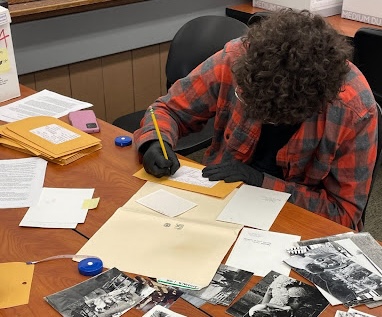
Example sorting and preparing for image cataloging/inventory
